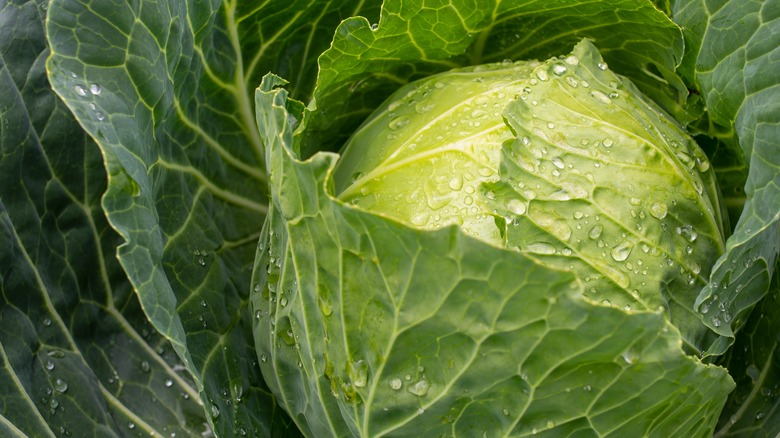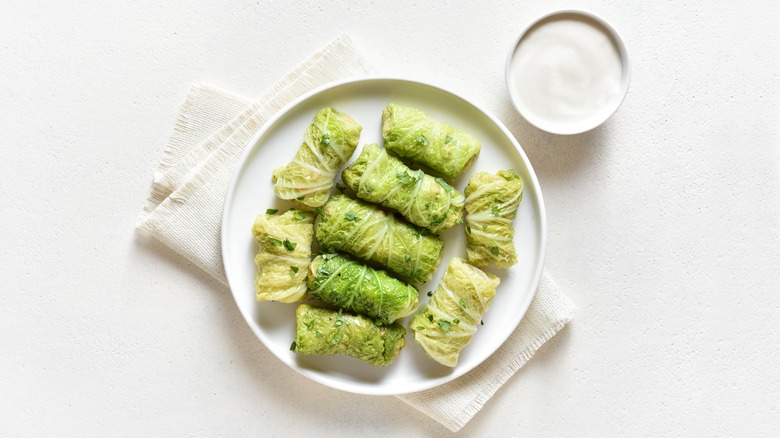Use The Freezer To Separate Cabbage Leaves More Easily
Who doesn't love cabbage rolls? Hearty, delicious, and healthy, the only drawback is the amount of tedious prep work it can take. Although you may have previously been taught by your grandmother to separate the foliage by blanching, there's an even easier way to loosen those leaves. While microwaving is a more modern option, we prefer another method that requires no heat whatsoever. All you need is a freezer and some patience.
A biennial plant, there are many different kinds of cabbage cultivars, some red, some white, and even some green. Fairly inexpensive, these smooth (sometimes crinkled) orbs of tightly-packed leaves tend to have a peppery and almost bitter flavor that transforms into a subtle sweetness when cooked. The perfect addition to any meal, cabbage is full of essential nutrients. Rich in vitamin C and vitamin K, Healthline explains that including the cruciferous vegetable into your diet can help lower cholesterol and blood pressure, in addition to supporting the immune system and reducing inflammation.
If you're officially sold on the idea of cooking up some cabbage — like we said before, saucy and meaty stuffed cabbage leaves are the obvious dinner option — then you're definitely going to want to learn this effortless hack that'll simplify how you soften leaves forever.
Freezing breaks down cellular structure
If you wish you could easily peel apart cabbage leaves without having to apply heat, consider your wish granted. Rather than boil the vegetable, do the exact opposite and try freezing an entire head of cabbage instead. Despite the fact that it might take a bit of extra time, this method proves to be safer and significantly less stinky — after all, no one wants their house to smell like gas.
The process is fairly straightforward. After removing the core of the cabbage, at Cuisine at Home's recommendation, Kitchen Ambition says to pop a rinsed and dried globe into a resealable bag to freeze. After several hours (or even the next day), let the cabbage defrost for a few hours before starting to peel the layers apart. Saving you time and sanity, the logic behind this method is rooted in science.
Since vegetables can have a water content of up to 90%, the University of Minnesota explains that once a veggie is frozen, the water that's stored in its cell walls expand and rupture. This damage to the cellular structure is what causes frozen vegetables to wilt, which is why Cuisine at Home shares that previously frozen cabbage leaves are much softer and more pliable than fresh (undamaged) cabbage leaves.

